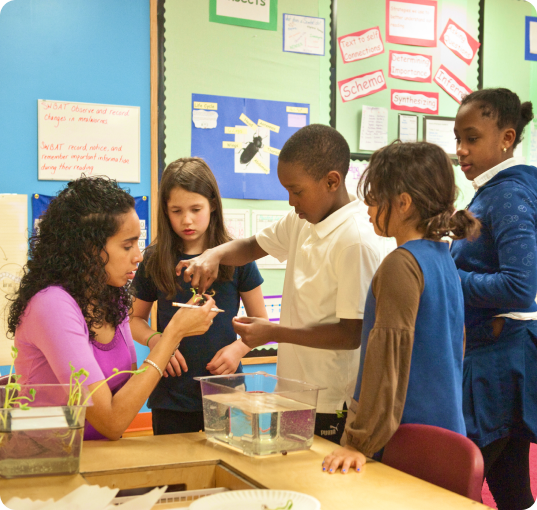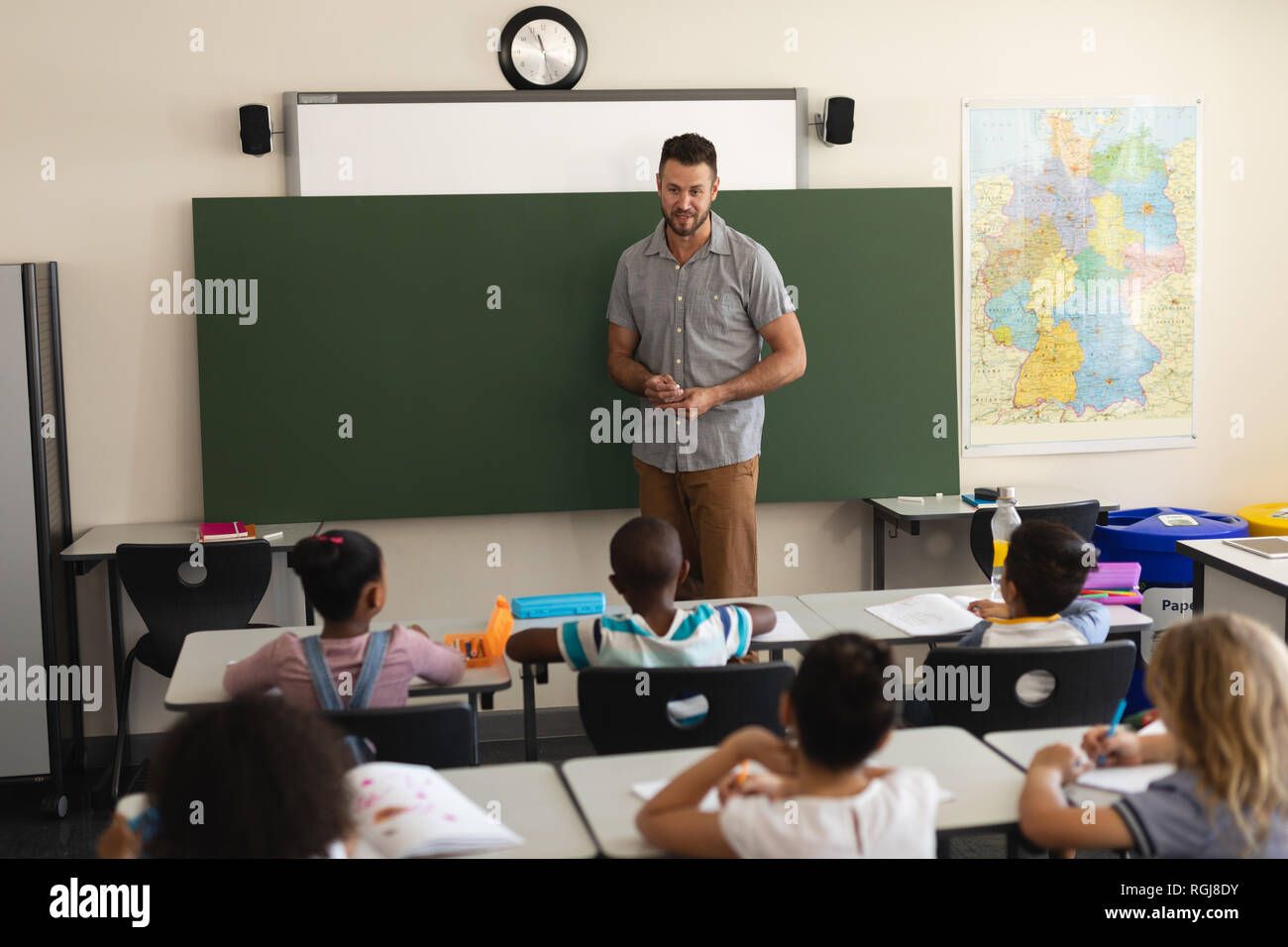Achieve Academic Success with Primary Science Tuition Singapore
Achieve Academic Success with Primary Science Tuition Singapore
Blog Article
Exploring the Various Teaching Techniques in Main Science Education And Learning Today
The landscape of primary science education is progressing, with numerous teaching strategies getting importance in modern classrooms. Inquiry-based knowing, hands-on experiments, and the combination of technology are redefining just how instructors engage young minds. In addition, collaborative approaches and separated direction are being used to cater to the varied demands of pupils, improving both engagement and understanding. As we examine these approaches, concerns arise about their performance and the ramifications for future instructional practices. What might these shifts in technique mean for the next generation of learners?
Inquiry-Based Knowing
Inquiry-Based Understanding (IBL) is an instructional strategy that motivates trainees to check out clinical principles via doubting, investigation, and hands-on testing. This method emphasizes the duty of trainees as active individuals in their knowing, promoting crucial thinking and analytical skills. By involving with real-world questions, trainees come to be motivated and curious, which enhances their understanding of scientific concepts.
In IBL, instructors act as facilitators, leading students as they navigate their queries instead than providing info directly. This student-centered technique enables distinction, fitting various finding out designs and rates. Students create abilities in creating theories, designing experiments, and examining information, which are essential for clinical literacy.
In addition, IBL promotes partnership among pupils, motivating them to share ideas and findings. This collective inquiry advertises social skills and a sense of neighborhood within the classroom. The procedure of query urges durability, as pupils discover to accept failing as a stepping stone toward understanding.
Hands-On Experiments
Hands-on experiments are a vital part of effective science education and learning, enhancing the concepts of inquiry-based learning. These experiments permit trainees to involve directly with scientific concepts, fostering a much deeper understanding with experiential knowing. By adjusting products and observing end results, young learners can comprehend abstract theories in tangible means.
Such tasks advertise critical thinking and analytical abilities, as pupils assume end results, conduct experiments, and evaluate results. This process motivates them to ask concerns, fine-tune their understanding, and develop a clinical mindset. In addition, hands-on experiments can be customized to diverse learning styles, ensuring that all students have the possibility to involve meaningfully with the content.
Moreover, hands-on experiments usually encourage cooperation amongst peers, promoting team effort and communication skills. Operating in teams allows trainees to share concepts, go over findings, and pick up from one another, which boosts their overall educational experience.
Including hands-on experiments into the key scientific research educational program not just enriches the finding out environment however also cultivates a lifelong interest in science. By actively getting involved in their education and learning, students are more probable to create a passion for scientific inquiry that prolongs past the classroom.

Innovation Assimilation
Integrating technology right into key scientific research education has become progressively essential in cultivating trainee engagement and improving discovering outcomes. Using digital devices, such as interactive simulations, virtual labs, and educational software application, offers trainees with opportunities to discover clinical principles in cutting-edge means. These sources help with a deeper understanding of intricate subjects by enabling students to imagine and control variables that would be impractical in a standard classroom setup.
In addition, technology assimilation urges individualized finding out experiences. Students can advance at their own rate, revisiting difficult principles via multimedia resources, which provide to different learning styles. This versatility not just sustains specific development however likewise grows a sense of freedom in learners.
In addition, innovation works as a bridge to real-world scientific research, linking students with current research study and specialist contributions. Accessibility to on-line databases and clinical journals expands trainees' perspectives on scientific questions and cultivates critical thinking skills.
Collaborative Learning
Collective knowing plays a vital duty in primary scientific research education and learning by fostering team effort and interaction abilities amongst students. This approach motivates students to work with each other, share expertise, and involve in analytical, which improves their explanation understanding of scientific ideas. By joining group tasks, students find out to articulate their concepts, listen to varied perspectives, and work out services, every one of which are vital abilities in both academic and real-world contexts.
:max_bytes(150000):strip_icc()/GettyImages-595348697-5b356e9ac9e77c00372d12a8.jpg)
Research suggests that collaborative discovering can bring about raised inspiration and engagement in scientific research topics, as pupils find pleasure in common experiences (primary science tuition Singapore). Additionally, this approach prepares pupils for future collaborative undertakings, outfitting them with the abilities required for reliable team effort in college and specialist atmospheres. Eventually, accepting joint knowing in key scientific research education and learning can considerably enhance the knowing experience and promote a deeper understanding of clinical questions
Set Apart Guideline

Set apart direction can manifest in numerous methods, such as differing the web content, procedures, or items of learning. For example, educators may make use of tiered jobs that provide varying degrees of intricacy, enabling pupils to operate at their particular preparedness degrees. In addition, flexible grouping techniques can promote collaboration amongst students with various capabilities, promoting peer learning.
Analysis plays a vital function in this method, as it informs guideline and aids instructors recognize each trainee's one-of-a-kind needs. Developmental analyses, such as quizzes and observations, can assist educators in changing their strategies to boost discovering results. primary science tuition Singapore. Inevitably, by applying differentiated guideline in key scientific research education and learning, educators can cultivate an extra efficient and equitable understanding environment, encouraging all trainees to reach their full potential in understanding clinical phenomena
Final Thought
In summary, the varied mentor methods in wikipedia reference primary scientific research education, including inquiry-based understanding, hands-on experiments, technology integration, collaborative understanding, and set apart guideline, collectively add to a much more efficient understanding setting. These approaches advertise essential thinking, analytic abilities, and a deeper comprehension of clinical principles. By implementing these approaches, teachers can create encouraging and engaging class that attend to the diverse demands of students, inevitably cultivating a long-lasting rate of interest in scientific research and improving academic achievement.
Inquiry-Based Discovering (IBL) is an instructional approach that encourages students to check out scientific concepts via questioning, investigation, and hands-on testing.Collaborative learning plays an essential function in main science education by promoting team effort and interaction abilities among pupils.Research study shows that joint learning can lead to raised inspiration and involvement in scientific research topics, as students locate enjoyment in shared experiences.In promoting an inclusive learning atmosphere, differentiated direction arises as a key method to suit the diverse demands and capabilities of students in key science education and learning. Eventually, by implementing set apart direction in main scientific research education, educators can cultivate a much more equitable and reliable discovering atmosphere, equipping all pupils to reach their complete potential in understanding scientific sensations.
Report this page